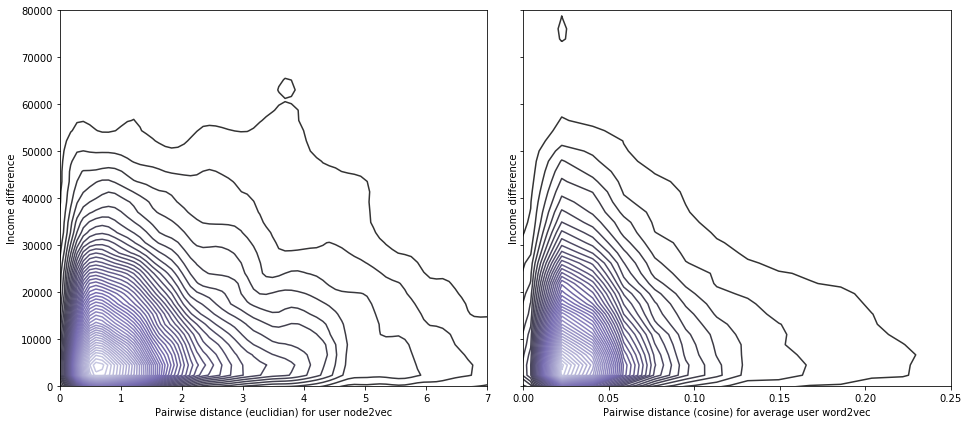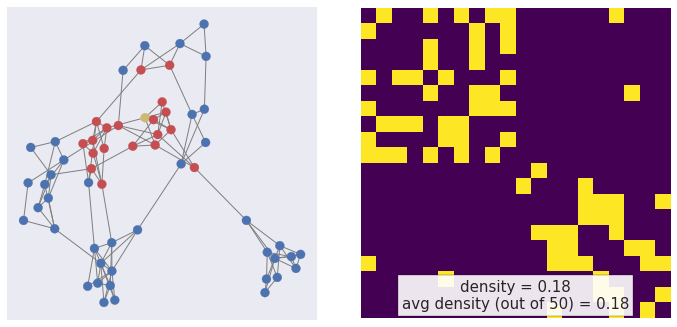Linguistic and social network coevolution: joint analysis of heterogeneous sources of information in Twitter
Sébastien Lerique, Jacobo Levy-Abitbol, Márton Karsai & Éric Fleury
IXXI, École Normale Supérieure de Lyon
Questions
-
2-way: how much do network structure and feature structure correlate
-
3-way: how well does feature set 1 + network structure predict feature set 2
(and how much does network structure help in predicting) -
Combined: how much can we compress network + features (down to what dimension)



network—feature dependencies
network—feature independence
Use deep learning to create embeddings



Sociolinguistics on 25% of the GMT+1/GMT+2 twittosphere in French
Questions
On Twitter


A framework
Graph convolutional neural networks + Auto-encoders
Current challenges
With great datasets come great computing headaches
How is this framework useful
Speculative questions we want to ask
Graph-convolutional neural networks



\(H^{(l+1)} = \sigma(H^{(l)}W^{(l)})\)
\(H^{(0)} = X\)
\(H^{(L)} = Z\)
\(H^{(l+1)} = \sigma(\color{DarkRed}{\tilde{D}^{-\frac{1}{2}}\tilde{A}\tilde{D}^{-\frac{1}{2}}}H^{(l)}W^{(l)})\)
\(H^{(0)} = X\)
\(H^{(L)} = Z\)
\(\color{DarkGreen}{\tilde{A} = A + I}\)
\(\color{DarkGreen}{\tilde{D}_{ii} = \sum_j \tilde{A}_{ij}}\)

Kipf & Welling (2016)

Neural networks

x
y
green
red

\(H^{(l+1)} = \sigma(H^{(l)}W^{(l)})\)
\(H^{(0)} = X\)
\(H^{(L)} = Z\)
Inspired by colah's blog
Semi-supervised GCN netflix
Four well-marked communities of size 10, small noise

More semi-supervised GCN netflix
Overlapping communities of size 12, small noise
Two feature communities in a near-clique, small noise
Five well-marked communities of size 20, moderate noise

Auto-encoders

From blog.keras.io
- Bottleneck compression → creates embeddings
- Flexible training objectives
- Free encoder/decoder architectures
high dimension
high dimension
low dimension
Example — auto-encoding MNIST digits

MNIST Examples by Josef Steppan (CC-BY-SA 4.0)
60,000 training images
28x28 pixels
784 dims
784 dims
2D

From blog.keras.io
GCN + Auto-encoders = 🎉💖🎉
node features
embedding
GCN
node features
adjacency matrix

Socio-economic status
Language style
Topics
Socio-economic status
Language style
Topics


Compressed & combined representation of nodes + network
Kipf & Welling (2016)
Scaling

node2vec, Grover & Leskovec (2016)

Walk on triangles

Walk outwards
| Dataset | # nodes | # edges |
|---|---|---|
| BlogCatalog | 10K | 333K |
| Flickr | 80K |
5.9M |
| YouTube | 1.1M | 3M |
| 178K | 44K |
✔
👷
👷
👷
Mutual mention network on 25% of the GMT+1/GMT+2 twittosphere in French
Mini-batch sampling


node2vec, Grover & Leskovec (2016)
walk back \(\propto \frac{1}{p}\)
walk out \(\propto \frac{1}{q}\)
walk in triangle \(\propto 1\)

Walk on triangles — p=100, q=100

Walk out — p=1, q=.01
How is this useful
a.k.a., questions we can (will be able to) ask
2-way: how much do network structure and feature structure interact
Combined: how much can we compress network + features
(down to what dimension)
3-way: how well does feature set 1 + network structure predict feature set 2
(and how much does network structure help in predicting)
Disentangled embeddings
Cluster comparisons
Socioeconomic status
Language style

Speculation
Thank you!
Sébastien Lerique, Jacobo Levy-Abitbol, Márton Karsai & Éric Fleury